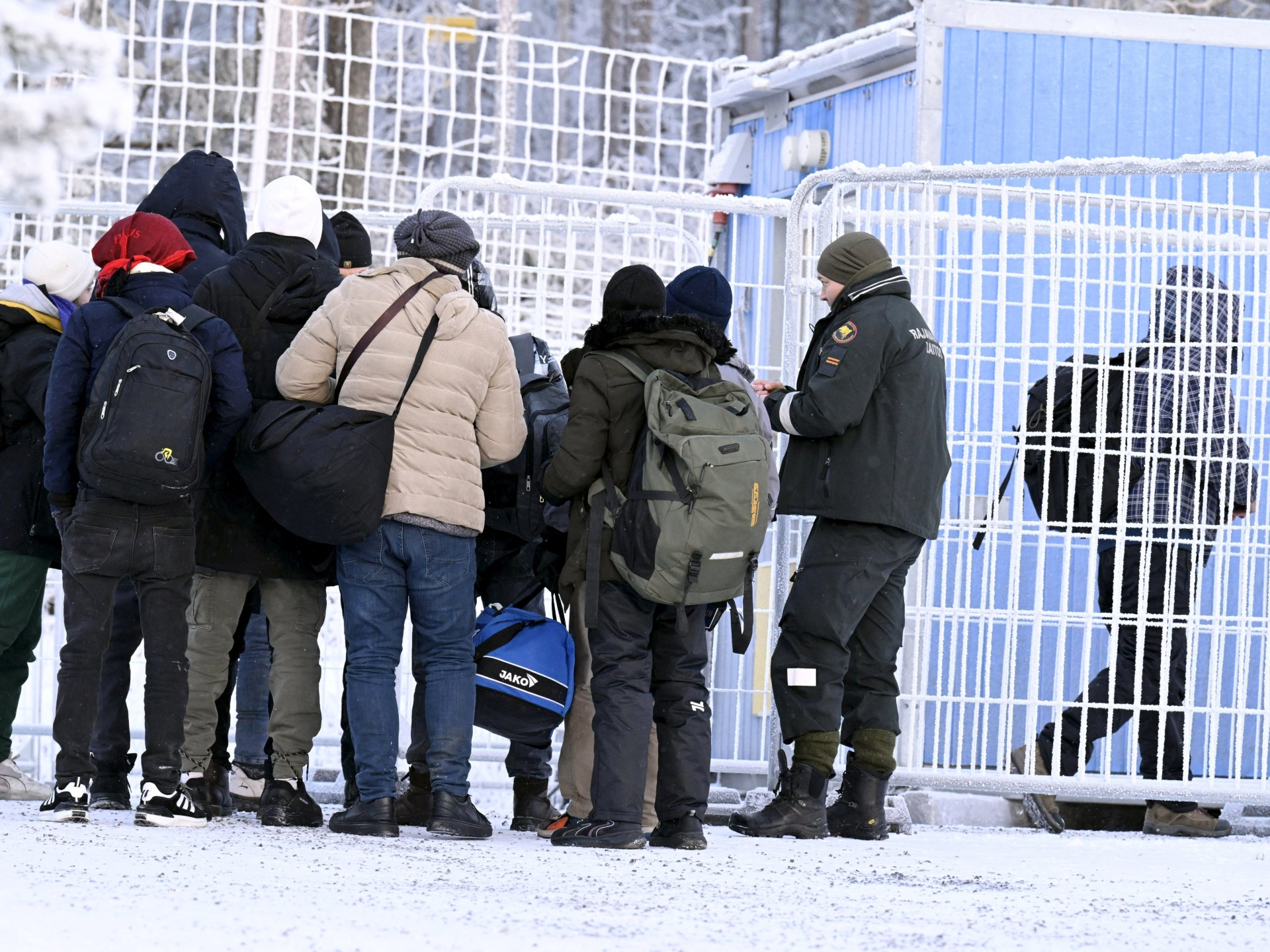Finland announced the closure of almost all of its border crossings with Russia due to an increase in arrivals of refugees and migrants that the Finnish government alleges Moscow deliberately redirected to the country’s frontiers.
Prime Minister Petteri Orpo stated on Wednesday that as of Friday, only the northernmost border crossing with Russia, Raja-Jooseppi, will remain open.
Last week, Finland closed four of its eastern border checkpoints and is now set to close three of the remaining four crossing points.
“Raja-Jooseppi is the northernmost [border crossing], and it requires a real effort to get there,” Orpo said at a press conference.
‘Surge’ in arrivals
In November, over 600 asylum seekers entered Finland via Russia, a significant increase compared to the few dozen arrivals in September and October. Most of them were young men from countries such as Yemen, Afghanistan, Kenya, Morocco, Pakistan, Somalia, and Syria. Some were families with children, as indicated by border guard data and photos from news outlets.
Officials also reported that Finnish border guards and soldiers have begun to erect barriers, including concrete obstacles topped with barbed wire, at some crossing points.
After the recent closures, arrivals shifted north towards the border stations Vartius and Salla, two of the remaining checkpoints that still accepted asylum applications, according to Finland’s statement.
“Undoubtedly Russia is instrumentalizing migrants” as part of its “hybrid warfare” against Finland, Foreign Minister Elina Valtonen said on Wednesday.
Moscow has denied the allegations that it is redirecting desperate migrants and refugees to the Finnish border.
Finland, which joined NATO in April, now serves as the European Union’s external border and makes up NATO’s northeastern flank alongside its border with Russia.
On Monday, the Russian Foreign Ministry summoned the Finnish ambassador in Moscow to lodge a formal protest over the closure of the most used checkpoints on the border.
Around 30 to 70 refugees and migrants are arriving daily at the Vartius checkpoint in Kainuu and the Salla checkpoint in Finland’s Arctic Lapland region, where temperatures have dropped to minus 20 degrees Celsius and heavy snowfall is reported.
Andrei Chibis, governor of northern Russia’s Murmansk region, posted pictures of migrants in a tent near the Salla checkpoint set up by regional authorities to provide warmth, food, and hot tea.
He described the situation as a “humanitarian crisis” and criticized Finnish authorities, stating that “foreign citizens can’t cross the border” to the Finnish side.
EU Commissioner for Home Affairs Ylva Johansson assured Finland of the European Union’s backing and announced that Finland has requested additional operational support from Frontex, the EU’s border agency, and up to 60 officers.
In 2011, 3,000 to 4,000 asylum seekers became stranded on the border between Poland and Belarus as Warsaw deployed security forces to stop migrants and refugees from entering during freezing winter temperatures.
Lithuania and Latvia also reported sharp increases in the number of people trying to cross their borders at the time.
The EU accused Minsk of deliberately enticing migrants and refugees to Belarus and then funneling them westwards with promises of easy entry into the bloc as part of a “hybrid attack” on its member states in retaliation for sanctions. Warsaw accused Russian President Vladimir Putin of masterminding the crisis.
Both Belarus and Russia denied the allegations.
Human rights groups accused Poland of conducting illegal pushbacks at its border and raised concerns for the wellbeing of the stranded refugees and migrants.


